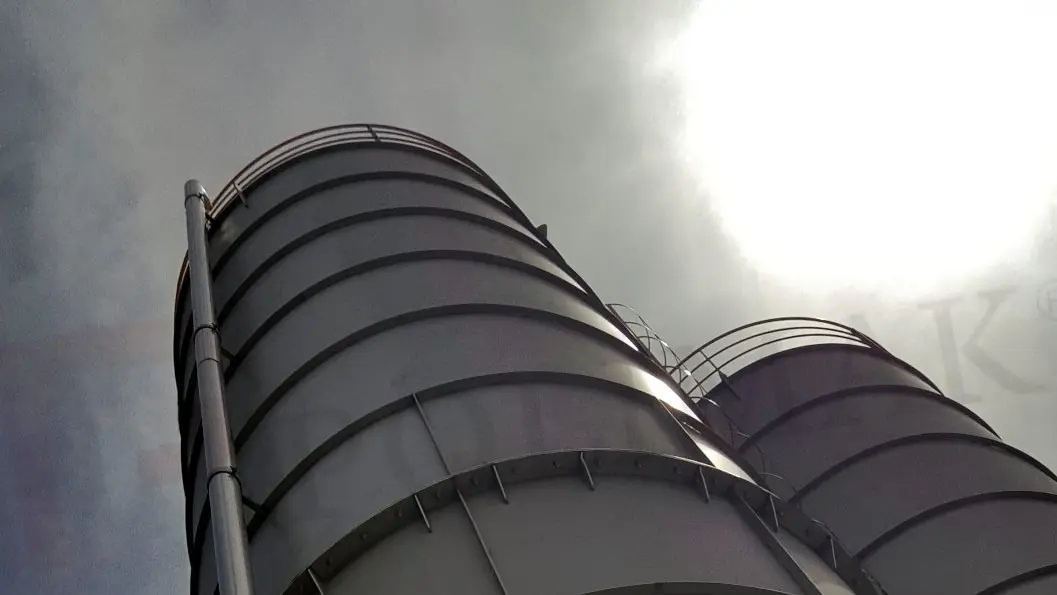Dust-Free Bagging
Bagging operations without airborne dust is essential in modern bulk packaging, particularly in industries like food, chemicals, and construction. Airborne dust can cause product loss, safety hazards, environmental contamination, and regulatory issues. Advanced dust containment systems are integrated into bulk bag filling stations to ensure clean, safe, and compliant operations.

Process Overview
- Sealed Bag Connections:
At the start of the filling process, the spout is tightly connected to a sealed fill head. This creates a closed system that prevents dust escape from the interface between the silo/feed system and the big bag. - Integrated Dust Extraction:
As bulk solids flows into the bag, displaced air and airborne particles are pulled away by a dust extraction system, typically consisting of a fan, ducting, and filter unit (e.g., cartridge or bag filters). - Inflatable or Mechanical Seals:
Inflatable collars or mechanical clamps tightly secure the bag’s inlet, preventing material leaks and ensuring the dust stays within the system throughout the filling process. - Overfill and Pressure Relief
Protection:
Handling systems often include pressure relief valves with filters to manage excess air and avoid over-pressurization that can lead to airborne dust. - Dust Recovery:
Some setups are designed to recover collected dust back into the product stream or silo, minimizing waste and maintaining cleanroom standards (especially critical in food and pharmaceutical industries).

Key Components
- Dust-Tight Filling Head:
A fully enclosed interface with inflatable or adjustable seals to connect the bulk bag spout. - Local Dust Extraction System:
Equipped with a suction fan, ducting, and filtration unit installed at or near the filling head. - Flexible Sleeve or Spout Clamp:
Securely connects the bag to the fill head, adapting to various bag sizes while maintaining a tight seal. - Dust Collection Filters:
High-efficiency filters capture fine particles and prevent them from entering the workspace. - Control Panel with Sensors:
Monitors airflow, pressure, and system status to ensure consistent dust-free operation.

Advantages and Key Benefits of Dust-Free Bagging
- Improved Workplace Safety:
Reduces operator exposure to fine dust particles that could pose respiratory risks—critical in chemical and cement applications. - Enhanced Product Quality:
Prevents contamination in food and pharmaceutical processes by ensuring clean handling and packaging environments. - Environmental Compliance:
Meets emissions and air quality standards (e.g., OSHA, ATEX, or EU Dust Directive), avoiding fines or operational shutdowns. - Reduced Product Loss:
Contained systems eliminate spillage and airborne particle, increasing yield and minimizing cleanup. - Cleaner Facility & Lower
Maintenance:
Less dust accumulation on equipment and floors means less frequent cleaning, longer machine lifespan, and lower maintenance costs.

Industry Applications
- Food Industry:
Bagging fine powders like milk powder, sugar, or flour in hygienic, dust-free environments to comply with food safety regulations. - Chemical Industry:
Filling dusty products such as titanium dioxide, carbon black, or detergents while protecting workers and preventing environmental contamination. - Construction Industry:
Bagging cement, fly ash, or hydrated lime with heavy-duty dust extraction to ensure clean handling and minimize cleanup on-site or at the plant.